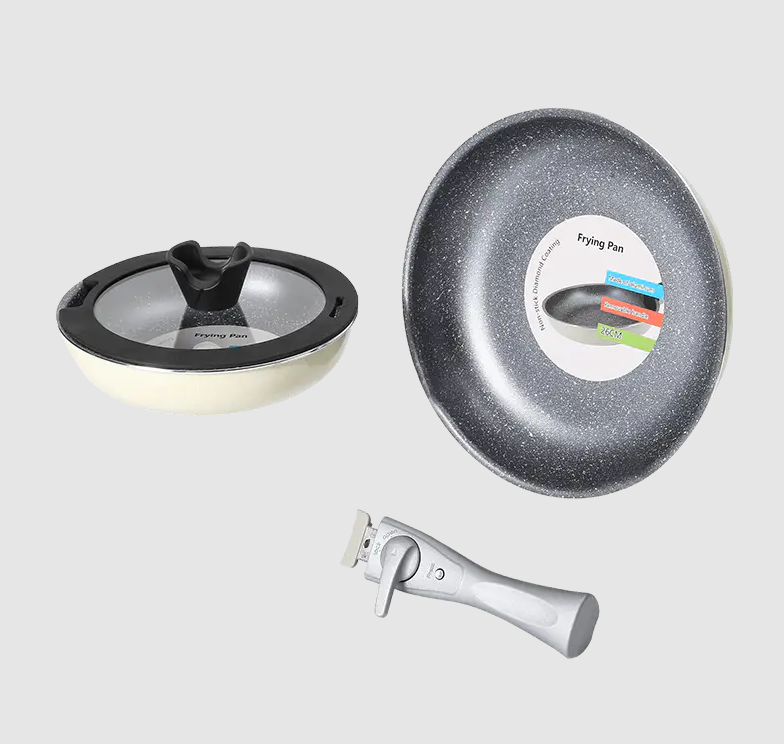Pressed cookware, a product of modern manufacturing techniques, has gained significant popularity in recent years due to its numerous advantages over traditional cast cookware. The process of creating pressed cookware involves the use of sheet metal that is shaped and pressed into various forms, resulting in that are both functional and aesthetically pleasing. This article will delve into the various ways in which pressed cookware outperforms cast cookware, examining factors such as durability, heat distribution, weight, and environmental impact.
One of the primary benefits of pressed cookware is its uniformity in thickness, which contributes to even heat distribution. Unlike cast cookware, which can have varying wall thicknesses due to the casting process, pressed cookware maintains a consistent thickness throughout. This uniformity ensures that food cooks evenly, reducing the risk of hot spots that can lead to unevenly cooked meals or burnt food. The even heat distribution is particularly beneficial for energy conservation, as it allows for quicker cooking times and reduced fuel consumption.
The manufacturing process of pressed cookware also lends itself to a lighter weight compared to cast cookware. The pressed method allows for the creation of thinner walls without compromising the structural integrity of the cookware. This reduction in weight makes pressed cookware more convenient for everyday use, as it is easier to handle and less tiring on the arms and wrists during extended cooking sessions.
Durability is another aspect where pressed cookware excels. The pressing process creates a stronger bond between the layers of metal, resulting in a more resilient product that is less prone to warping or cracking over time. Cast cookware, on the other hand, can develop micro-fractures due to the cooling and solidification process, which may lead to eventual failure. Pressed cookware's durability not only extends its lifespan but also makes it a more cost-effective investment in the long run.
The environmental impact of pressed cookware is another area where it shines. The pressing process requires less energy than the casting process, which involves high temperatures and significant energy expenditure. Additionally, pressed cookware's lightweight design means that it requires less material to produce, reducing the overall environmental footprint. This eco-friendliness is particularly important in today's world, where sustainability and carbon footprint reduction are key concerns.
Aesthetically, pressed cookware often has a sleeker and more modern appearance due to the precision of the pressing process. This allows for a smoother surface finish and more intricate designs, which can be appealing to consumers who value the visual aspect of their kitchen tools. Cast cookware, while having a rustic charm, may have a rougher surface and a less uniform design, which can sometimes be less appealing to the eye.
In terms of versatility, pressed cookware is compatible with a wide range of heat sources, including induction cooktops, which are becoming increasingly popular. The even heat distribution of pressed cookware makes it ideal for use on these modern cooking surfaces, whereas cast cookware may not perform as well due to its uneven heat distribution.
Maintenance and cleaning are also simpler with pressed cookware. The smooth surfaces are less likely to harbor food particles and are easier to clean, reducing the risk of bacterial growth and ensuring a hygienic cooking environment. Cast cookware, with its rougher surface, may require more effort to clean thoroughly.
In conclusion, pressed cookware offers numerous advantages over traditional cast cookware. Its even heat distribution, lighter weight, durability, environmental benefits, aesthetic appeal, versatility, and ease of maintenance make it a superior choice for modern kitchens. As consumers become more discerning and environmentally conscious, the demand for pressed cookware is likely to continue to grow, solidifying its position as a preferred option in the cookware market.
Pressed Cookware include 1.2quart caserole pot with T-shape lid(18X7cm) ,1.7quart caserole pot with T-shape lid(20X7.5cm) ,2 quart caserole pot with T-shape lid(22X8cm) ,2.5 quart caserole pot with T-shape lid(24X8.5cm)
Aluminum body with nonstick coating, marble for easy cooking and cleaning; BPA-free
Beechwood handles stay cool during use, vented glass lids let steam escape, silicon lid keeps your pan always new.
induction bottom heats evenly; compatible with gas, electric, and glass stovetops induction
Hand wash only, not dishwasher safe; please check the size of your stovetop's hobs before purchasing
Please use low to medium heat; extremely high temperatures can cause handle and coating damage
